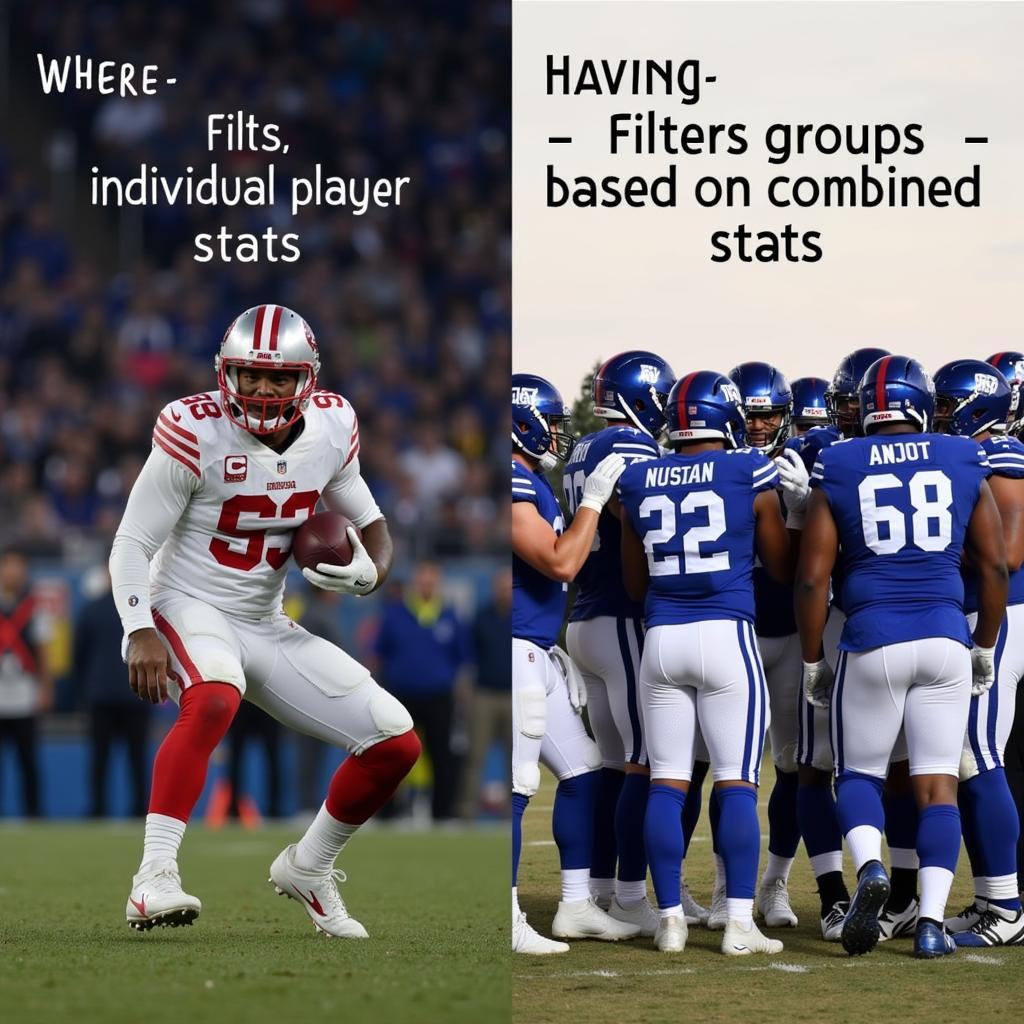When diving into the world of data analysis with SQL, understanding how to filter and manipulate data is crucial. Two common clauses that often trip up beginners are “having” vs “where”. Though they both filter information, knowing when to use each can make a world of difference in the accuracy and efficiency of your queries.
Deciphering the Difference: ‘Having’ vs ‘Where’
The core distinction lies in what these clauses filter. “Where” works directly on the table’s rows, sifting through the data before any groupings are applied. It’s like selecting specific players from a football team based on their individual stats before analyzing team performance.
“Having,” on the other hand, acts on the results after aggregations are performed, typically alongside GROUP BY. Imagine you’ve grouped your football team into offense and defense; “having” lets you filter these groups based on combined stats like total goals or tackles made.
 SQL Having vs Where Football Analogy
SQL Having vs Where Football Analogy
When to Use ‘Where’: Filtering Individual Records
Consider a scenario where you need to find all midfielders (MF) from your football database who scored more than 10 goals in a season:
SELECT *
FROM Players
WHERE Position = 'MF' AND Goals > 10;Here, “where” elegantly filters the “Players” table for those meeting both conditions before any grouping takes place.
Unleashing the Power of ‘Having’: Filtering Aggregated Data
Now, let’s say you want to identify which football teams have an average player age above 25:
SELECT Team, AVG(Age) AS AverageAge
FROM Players
GROUP BY Team
HAVING AVG(Age) > 25;In this case, “having” shines by filtering the groups (teams) created by “GROUP BY” based on the calculated average age.
Common Pitfalls and How to Avoid Them
A frequent mistake is attempting to use “having” without a “GROUP BY” clause, leading to errors. Remember, “having” is designed to work on aggregated data, so grouping is essential.
Pro Tip: While technically possible to use “where” with aggregate functions, it’s generally cleaner and more efficient to employ “having” for these scenarios.
Real-world Applications: ‘Having’ vs ‘Where’ in Action
These clauses aren’t confined to just football stats; their applications are vast! Imagine analyzing customer purchase data:
- “Where” could isolate customers from a specific region.
- “Having” might reveal product categories with average order values exceeding a certain threshold.
From financial analysis to marketing insights, mastering “having” and “where” empowers you to extract meaningful information from your datasets.
 Applications of SQL Having vs Where
Applications of SQL Having vs Where
Conclusion: Choosing the Right Clause for Your Query
Understanding the fundamental difference between “having” and “where” is vital for crafting precise and effective SQL queries. By remembering that “where” operates on individual records while “having” targets aggregated data, you’ll be well-equipped to unlock the full potential of SQL for your data analysis needs.
Need help mastering SQL or exploring other data analysis techniques? Contact us at 02838172459, email us at truyenthongbongda@gmail.com, or visit us at 596 Đ. Hậu Giang, P.12, Quận 6, Hồ Chí Minh 70000, Việt Nam. Our team is available 24/7 to assist you!